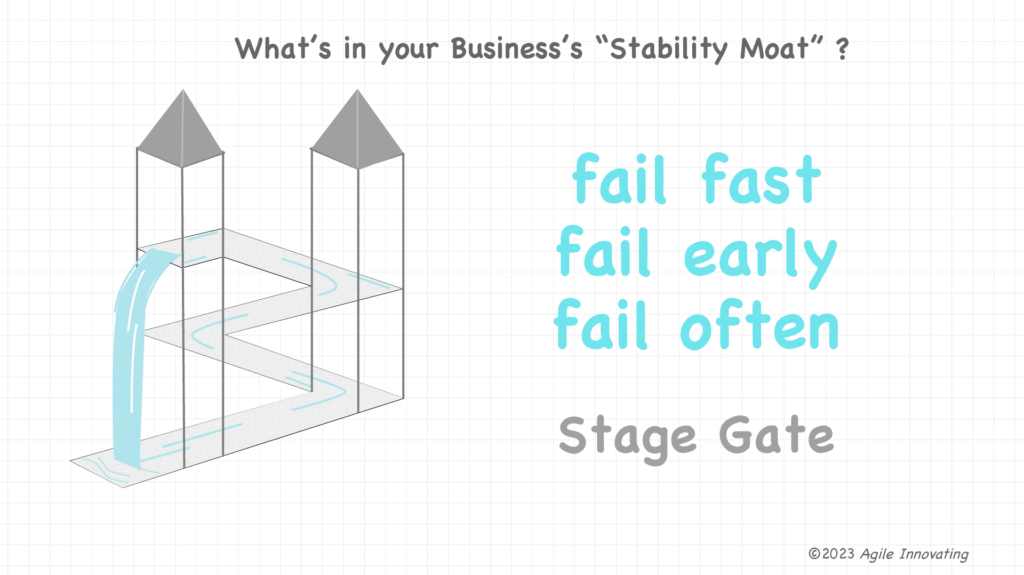
Good performing businesses are built upon stable platforms; budgets, plans, standard procedures, products, services, and processes. Stable platforms, with business results driven by execution, must be protected from unplanned disruptive change. To protect these stable platforms, business leaders often build “stability moats” around the platforms. These stability moats are maintained to prevent uncertainty from having a negative impact on performance and results. Stability moats are one mechanism for keeping uncertainty out of the business.
Innovating invites uncertainty into a business. So what’s in the moat that keeps the uncertainty out? One of the most common things is a misplaced belief about innovating. A second common thing, related to the first, is a decision management process. We’ll address the misplaced belief in this newsletter. We’ll follow this up with a second newsletter addressing the decision management process.
The misplaced belief is that you need to “fail fast, fail early, and fail often” when innovating. The basic idea is that in the universe of potential solutions, there are many more solutions that won’t work than will. By eliminating as many solutions that won’t work as quickly and as soon as possible, you increase the chances that a remaining potential solution will be successful. This idea may be comforting when working with uncertainty, but it broadens and deepens the moat in practice.
This belief can be debilitating to an innovating program.
- It assumes the first innovating step is generating ideas.
- It substitutes development busyness for being productive.
- Assuming that you’re working towards idea failure becomes an excuse for not preparing the organization for changing the status quo later.
- It increases the elapsed time and cost to develop a new solution. The time and expense spent on disqualifying solutions that don’t work is wasted.
- It increases the dynamic friction to changing the status quo as total development time and expense increases while confidence in a successful outcome decreases.
- Human psychology biases action towards the thing you are focusing on. If you focus on failure, you’re likely to get it.
- It can bias leadership to make the Fundamental Attribution Error; the conclusion that innovating ineffectiveness is a people problem rather a practice / execution problem.
Higher hit rate innovating starts with defining the constraints (e.g. Market, competition, technology, available PSP solutions, customer and the user PSP experience, competitive position, basis of competition). The definition of constraints more effectively reduces the potential solution set than the unconstrained “fail fast, fail early, fail often” mantra.
Innovating becomes even more difficult when the beliefs and processes you employ make the stability moat harder to cross. Agile Innovating TM is an innovating business system that purposefully identifies and reduces the sources of uncertainty that reinforce the stability moat. Contact us to increase your innovating hit rate, yielding more innovation faster, making innovation the norm.
